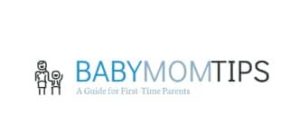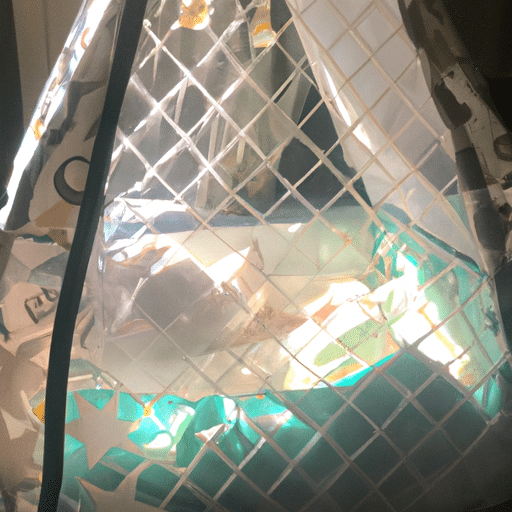Thinking about getting a crib tent to help your little one sleep better? We understand the struggles of sleepless nights and the importance of finding solutions that work. In this article, we explore the pros and cons of using a crib tent, providing you with all the information you need to make an informed decision for your baby’s sleep.
Review contents
What is a crib tent?
Definition of a crib tent
A crib tent is a protective covering that is specifically designed to be placed over a baby’s crib. It is usually made of mesh material and is attached to the top of the crib, creating a tent-like structure. The purpose of a crib tent is to provide a safe and secure sleeping environment for babies, while also offering protection against various potential hazards.
Purpose of a crib tent
The primary purpose of a crib tent is to ensure the safety and well-being of babies while they are sleeping. It acts as a barrier to prevent babies from falling out of the crib, protecting them from potential injuries. Additionally, crib tents can also help protect babies from insects, such as mosquitoes, and safeguard them against interference from pets or other distractions in the room.
How a crib tent works
A crib tent typically consists of a frame, which is attached to the top of the crib, and a mesh enclosure that surrounds the sides and top of the crib. The mesh material is breathable, allowing for proper air circulation within the crib. The structure of the crib tent creates a secure and enclosed space for the baby, reducing the risk of falls and providing a peaceful environment for sleep.
Benefits of using a crib tent
Prevention of falls
One of the main benefits of using a crib tent is the prevention of falls. As babies become more active and start crawling and exploring their surroundings, they may be at risk of falling out of the crib, especially during sleep. The crib tent acts as a protective barrier that prevents them from climbing or rolling out of the crib, giving parents peace of mind and reducing the risk of injuries.
Protection against insects
Insects, such as mosquitoes, can be a common nuisance and may even pose health risks to babies. A crib tent provides an additional layer of protection by keeping insects away from the baby while they sleep. The mesh material allows for proper ventilation while acting as a barrier against pesky bugs, ensuring a peaceful and safe sleep environment.
Safeguarding against pets
If there are pets in the house, having a crib tent can be particularly useful in keeping them away from the baby’s sleeping area. While many pets are well-behaved around babies, there may still be instances where a curious pet could unintentionally disrupt the baby’s sleep or pose a risk to their safety. A crib tent provides a physical barrier that helps keep pets at a safe distance, ensuring the baby’s uninterrupted sleep.
Reduction in distractions
Babies can be easily distracted, and even the slightest noises or movements in the environment can disrupt their sleep. With a crib tent, the enclosed space helps create a cozy and secluded sleeping area, reducing external disturbances. This can lead to better quality sleep for the baby, as they are less likely to wake up or be disturbed by outside stimuli.
Encourages independent sleep
As babies grow, it is important to encourage their independence and self-soothing skills. A crib tent can support the development of these skills by providing a secure and contained sleeping environment. The enclosed space allows babies to explore their own space and learn to fall asleep and settle themselves without constant intervention from parents. This can be beneficial in creating healthy sleep habits and promoting self-soothing abilities.
Potential drawbacks of using a crib tent
Limited space for movement
While crib tents provide a safe and secure environment, they can also restrict the baby’s movement to some extent. The enclosed space may limit the baby’s ability to stretch or move freely during sleep, which may be uncomfortable for some babies, especially as they grow older. It is important for parents to consider the baby’s comfort and freedom of movement when using a crib tent.
Build-up of heat and stale air
The mesh material of a crib tent allows for proper air circulation, but it may not provide the same level of ventilation as an open crib. This can result in a build-up of heat and stale air within the enclosed space, potentially causing discomfort for the baby and affecting their sleep quality. It is important for parents to monitor the temperature and airflow within the crib tent to ensure the baby’s comfort and safety.
Risk of entanglement or entrapment
While crib tents are designed with safety in mind, there is still a small risk of entanglement or entrapment. The baby’s limbs or clothing may get caught in the mesh material, potentially causing injury or hindering their movement. It is crucial for parents to regularly inspect the crib tent and ensure that it is securely attached and in good condition to minimize any potential risks.
Interference with parental monitoring
Some parents may rely on video or audio monitors to keep an eye on their baby while they sleep. However, the presence of a crib tent may obstruct the view or interfere with the clarity of the monitor. This can make it challenging for parents to monitor their baby’s sleep or check on them without physically going into the room. It is important for parents to consider their monitoring preferences and needs when using a crib tent.
Dependence on the crib tent
Another potential drawback of using a crib tent is that it may create a dependency on the structure for both the baby and the parents. If the baby becomes accustomed to the enclosed space and relies on the crib tent for comfort and sleep, it may become challenging to transition them to an open crib or a toddler bed in the future. Parents should carefully consider their long-term sleep goals and whether the use of a crib tent aligns with those goals.
Safety considerations when using a crib tent
Ensuring proper installation
Proper installation of the crib tent is crucial to ensure its effectiveness and safety. Parents should carefully follow the manufacturer’s instructions and securely attach the crib tent to the crib. It is important to double-check that all fasteners are properly secured and that there are no loose parts or gaps that could pose a risk to the baby.
Choosing a reliable crib tent
When selecting a crib tent, it is essential to choose a reliable and reputable brand. Look for crib tents that meet safety standards and have positive reviews from other parents. It is advisable to do thorough research and read product descriptions and customer feedback to determine the quality and safety of the chosen crib tent.
Regularly inspecting for wear and tear
To ensure continued safety, parents should regularly inspect the crib tent for any signs of wear and tear. Check for loose threads, holes, or weakened areas in the mesh material. If any damage is found, it is important to either repair or replace the crib tent promptly to prevent any potential hazards.
Maintaining a suitable sleep environment
While a crib tent can provide a safe sleeping environment, it is important to maintain other aspects of a suitable sleep environment as well. This includes keeping the crib clear of any loose bedding or soft objects that may pose a suffocation risk. Additionally, maintaining a comfortable room temperature and ensuring proper ventilation can contribute to the baby’s overall sleep quality and safety.
Supervising the baby during use
Even with the presence of a crib tent, it is crucial for parents to continue supervising their baby during sleep. Regularly check in on the baby and monitor their well-being while they are inside the crib tent. While crib tents can provide added safety, parental supervision remains a vital aspect of ensuring the baby’s security and comfort.
Alternatives to crib tents
Swaddling
Swaddling is a technique that involves snugly wrapping a baby in a blanket, mimicking the feeling of being in the womb. This can provide a sense of security and comfort, promoting better sleep for some babies. Swaddling can be an alternative to crib tents for parents who prefer not to use a crib tent but still want to create a secure sleeping environment for their baby.
Baby sleep sacks
Baby sleep sacks, also known as wearable blankets, are another alternative to crib tents. Sleep sacks offer a secure and enclosed sleeping space without the need for additional structures. They can provide warmth, comfort, and mobility for the baby while ensuring a safe sleep environment.
Transition to a toddler bed
As babies grow older and become more mobile, transitioning to a toddler bed can be a viable alternative to using a crib tent. Toddler beds typically have built-in safety features, such as guard rails, that provide a secure sleeping space while allowing for more freedom of movement. This transition can support the baby’s developmental needs and promote independent sleep.
Creating a safe sleep space
Creating a safe sleep space within a standard crib can also be an alternative to using a crib tent. This involves removing any potential hazards, such as loose bedding, pillows, or stuffed animals, and ensuring that the crib meets safety standards. By creating a secure and uncluttered sleeping environment, parents can promote safe and comfortable sleep for their baby without relying on a crib tent.
Expert opinions on crib tents
Pediatrician’s perspective
Opinions among pediatricians regarding the use of crib tents may vary. Some pediatricians may endorse the use of crib tents as a safety measure to prevent falls and protect against potential hazards. However, it is important for parents to consult with their own pediatrician to get personalized advice based on their baby’s specific needs and development.
Sleep consultant’s viewpoint
Sleep consultants, who specialize in helping families establish healthy sleep habits, may have varying opinions on the use of crib tents. Some sleep consultants may support the use of crib tents as a useful tool for creating a safe sleep environment. However, others may recommend alternative methods, such as creating a safe sleep space or utilizing other sleep aids, depending on the individual baby’s needs and sleep patterns.
Parent experiences and testimonials
Parent experiences and testimonials can offer valuable insights when considering the use of a crib tent. Hearing firsthand accounts from other parents who have used crib tents can provide a better understanding of the benefits and drawbacks. It is important to consider a range of perspectives and experiences before making a decision.
Factors to consider before purchasing a crib tent
Age and development of the baby
The age and developmental stage of the baby are important factors to consider before purchasing a crib tent. Younger babies who are not yet mobile may not require the added protection of a crib tent, while older babies who are starting to crawl or climb may benefit from the safety features of a crib tent.
Crib and mattress type
The type of crib and mattress being used should also be considered when purchasing a crib tent. Ensure that the crib tent is compatible with the specific crib and mattress dimensions to ensure proper fit and secure installation.
Baby’s sleep patterns and behaviors
Parents should take into account their baby’s sleep patterns and behaviors before deciding to purchase a crib tent. If the baby already sleeps well without major safety concerns or disruptions, a crib tent may not be necessary. However, if the baby has a tendency to move around excessively during sleep or exhibits a risk of falling out of the crib, a crib tent may provide added peace of mind.
Budget and cost-effectiveness
The cost of crib tents can vary depending on the brand and features. Parents should consider their budget and weigh the cost against the potential benefits and drawbacks of using a crib tent. It may be worth investing in a higher-quality crib tent if it aligns with the baby’s needs and offers long-term usability.
Long-term usefulness
Parents should also consider the long-term usefulness of a crib tent. If the baby is approaching the age where they will need to transition to a toddler bed soon, investing in a crib tent may not be the most practical option. Evaluating the baby’s sleep needs and potential future transitions can help determine whether a crib tent is a worthwhile investment.
Research studies on crib tent effectiveness
Overview of existing research
While there is limited empirical research specifically focusing on the effectiveness of crib tents, some studies have explored the impact of cribs with similar mesh coverings on sleep-related outcomes. These studies have generally found positive effects in terms of reducing the risk of falls and creating a secure sleep environment for babies.
Crib tent impact on sleep quality
Research on crib tents specifically has shown that they can help create a conducive sleep environment by reducing distractions and promoting independent sleep. Babies who sleep in crib tents have shown improvements in sleep duration and sleep quality, leading to more restful nights for both the baby and their parents.
Safety concerns in research findings
Despite the positive findings regarding crib tents’ effectiveness, some research studies have also highlighted safety concerns related to entanglement or entrapment. These risks can occur if the crib tent is not properly installed, or if there are any loose or damaged parts. It is crucial for parents to follow the manufacturer’s instructions and prioritize safety when using a crib tent.
Limitations and gaps in research
While some research has explored the effectiveness and safety of crib tents, there are still limitations and gaps in the current body of research. More studies are needed to assess long-term outcomes, potential risks, and the optimal use of crib tents. Parents should use the available research as a starting point and consider their individual circumstances when making a decision about using a crib tent.
User reviews and ratings of popular crib tents
Top-rated crib tents on the market
When considering the purchase of a crib tent, it can be helpful to look at user reviews and ratings of popular brands and models. Some top-rated crib tents on the market include ABC Kids Canopy Crib Tent, KidCo Convertible Crib Tent, and Dreambaby Foldable Crib Tent. These crib tents have received positive reviews for their effectiveness and safety features.
Pros and cons based on user experiences
User reviews can provide valuable insights into the pros and cons of different crib tents. Some common pros mentioned by users include increased safety, reduced distractions, and improved sleep quality. However, there may also be cons reported by users, such as difficulties with installation, concerns about the mesh material, or limitations in terms of space and mobility.
Comparison of different brands and models
Comparing different brands and models can help parents find a crib tent that best suits their needs. Factors to consider when comparing crib tents include safety features, ease of installation, durability, and user satisfaction. By comparing different options, parents can make an informed decision based on their preferences and requirements.
Conclusion
Considering the pros and cons
When deciding whether to purchase a crib tent, it is essential to weigh the pros and cons. Crib tents offer benefits such as fall prevention, protection from insects and pets, reduction in distractions, and promotion of independent sleep. However, potential drawbacks include limited space for movement, thermal regulation concerns, entanglement risks, interference with monitoring, and possible dependence on the crib tent.
Assessing individual baby’s needs
Every baby is unique, and what works for one may not work for another. It is crucial to assess the specific needs and sleep patterns of the baby when considering the use of a crib tent. Factors such as age, developmental stage, and sleep behaviors should be taken into account to determine if a crib tent would be beneficial.
Consulting healthcare professionals
Consulting with healthcare professionals, such as pediatricians or sleep consultants, can provide valuable guidance and advice based on the specific needs of the baby. These professionals can offer expert opinions, address any concerns, and assist in making an informed decision about using a crib tent.
Making an informed decision
Ultimately, the decision to purchase a crib tent should be based on a thorough consideration of the individual baby’s needs, parental preferences, and safety factors. Assessing the pros and cons, consulting healthcare professionals, and using reliable reviews and ratings can help parents make an informed decision that promotes the baby’s safety, comfort, and quality of sleep.






























